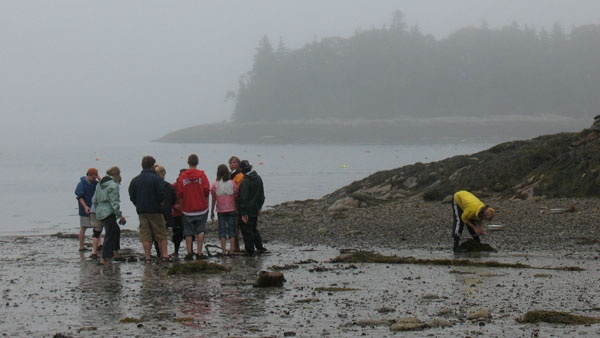By Art Borror
Over 45 years ago, when I was a student assistant at the Audubon Camp in Maine, the staff included Carl W. Buchheister, Bart and Joe Cadbury, Farida Wiley, Margaret Wall, Allan Cruickshank, and my father, Donald J. Borror. They focused their teaching skills on presenting the “Audubon cause”: the dependency and links between natural history, ecology, public awareness, and conservation action. It became clear to me that education in field natural history was absolutely crucial to the ultimate preservation of our natural resources. Those experiences at the Audubon Camp in Maine shaped my career directions as a teacher.
The “Audubon cause” is the dependency and links between natural history, ecology, public awareness, and conservation action.
In those same days in the early 1950s, I often listened as Millicent Todd Bingham quoted from her knowledge of the poetry of Emily Dickinson. The particular line that meant the most to me was, “Be careful, young man, what you dream, for dreams oft times come true.” Those lines have echoed back to me many times, as I joined the teaching staff at the Audubon Camp in the 1960s, and more recently as I have become involved in helping the camp’s reach into the next millenium.
The next decade will undoubtedly continue to involve curricular changes and revised management strategies at the Audubon Camp, reflecting developing needs in a changing world. However, the Audubon Camp on Hog Island still can provide the sort of exciting field experience that has made nature come alive for campers for the past 65 years. Contact with dedicated, knowledgable staff and opportunities in natural history can allow all of us to realize our role in directing the public’s attention toward wise use of resources and the interrelatedness of our natural world. I hope that as “Friends of Hog Island,” we all can lend the support necessary to achieve the Audubon Camp’s goals. I look forward with great optimism to next summer’s activities on the island.

